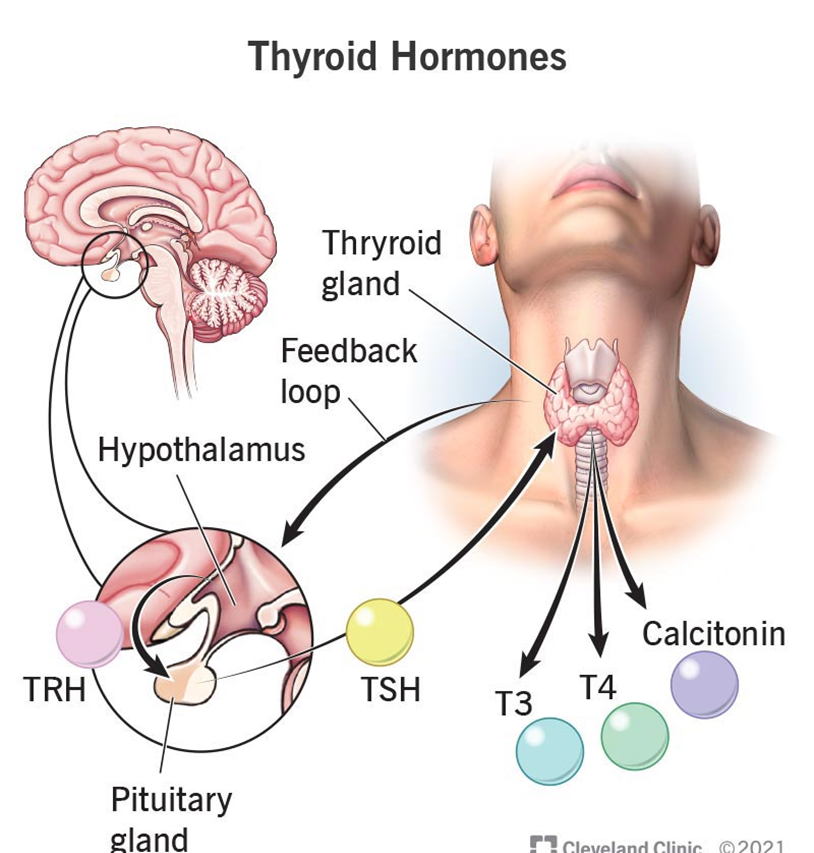A nurse is providing care for a client who has hypervolemia, ketoacidosis, and metabolic acidosis. Which of the following lab values should the nurse be concerned about?
Serum potassium levels
Serum calcium levels
Serum sodium levels
Blood urea nitrogen (BUN)
The Correct Answer is A
The correct answer is a) Serum potassium levels.
Choice A reason:
Serum potassium levels are crucial to monitor in clients with hypervolemia, ketoacidosis, and metabolic acidosis. Potassium imbalances are common in these conditions due to shifts between intracellular and extracellular compartments. In diabetic ketoacidosis (DKA), for example, insulin deficiency and acidosis cause potassium to move out of cells, leading to hyperkalemia. However, once treatment with insulin begins, potassium shifts back into cells, which can cause hypokalemia. Both hyperkalemia and hypokalemia can have serious cardiac implications, making it essential to monitor and manage potassium levels closely.
Choice B reason:
Serum calcium levels are important for overall health, but they are not the primary concern in the context of hypervolemia, ketoacidosis, and metabolic acidosis. While calcium imbalances can occur, they are less common and less immediately life-threatening compared to potassium imbalances. Monitoring calcium is still necessary, but it does not require the same level of immediate intervention.
Choice C reason:
Serum sodium levels are also important to monitor, especially in conditions like hypervolemia where fluid balance is disrupted. However, sodium imbalances are typically managed through fluid management and do not pose the same immediate risk as potassium imbalances in the context of ketoacidosis and metabolic acidosis. Hyponatremia or hypernatremia can cause neurological symptoms, but these are generally less acute compared to the cardiac risks associated with potassium imbalances.
Choice D reason:
Blood urea nitrogen (BUN) levels provide information about kidney function and hydration status. Elevated BUN can indicate dehydration or renal impairment, which are relevant in the context of hypervolemia and ketoacidosis. However, BUN levels do not require the same level of immediate intervention as potassium levels. Monitoring BUN is important for overall management but is not the primary concern in acute settings.
Nursing Test Bank
Naxlex Comprehensive Predictor Exams
Related Questions
Correct Answer is B
Explanation
Choice A Reason:
Conivaptan hydrochloride is a vasopressin receptor antagonist used to treat hyponatremia in patients with SIADH. It works by blocking the action of vasopressin, thereby promoting water excretion without significant loss of sodium. This helps to correct the water imbalance caused by SIADH. Conivaptan is typically administered intravenously and is effective in increasing serum sodium levels.
Choice B Reason:
Vasopressin, also known as antidiuretic hormone (ADH), is contraindicated in patients with SIADH because it exacerbates the condition. SIADH is characterized by excessive release of ADH, leading to water retention and hyponatremia. Administering vasopressin would further increase water reabsorption in the kidneys, worsening the hyponatremia.
Choice C Reason:
Sodium chloride tablets are used to manage hyponatremia in SIADH by increasing sodium intake. This helps to counteract the dilutional hyponatremia caused by excessive water retention. Sodium chloride tablets are often prescribed alongside fluid restriction to help raise serum sodium levels.
Choice D Reason:
Tolvaptan is another vasopressin receptor antagonist used to treat hyponatremia in SIADH. It works similarly to conivaptan by blocking the action of vasopressin, promoting water excretion, and increasing serum sodium levels. Tolvaptan is typically administered orally and is effective in managing SIADH.
Correct Answer is B
Explanation
Choice A reason: Increased Thirst, Increased Urine Output, and Weight Loss
Increased thirst, increased urine output, and weight loss are symptoms commonly associated with diabetes mellitus, particularly uncontrolled diabetes. These symptoms occur due to the body’s attempt to eliminate excess glucose through urine, leading to dehydration and subsequent weight loss. However, these symptoms are not typically associated with elevated TSH levels, which indicate hypothyroidism.
Choice B reason: Fatigue, Constipation, Weight Gain
Fatigue, constipation, and weight gain are classic symptoms of hypothyroidism2. When the thyroid gland is underactive, it produces insufficient thyroid hormones, leading to a slowdown in the body’s metabolism. This results in fatigue, weight gain, and constipation, among other symptoms. Elevated TSH levels are a compensatory response by the pituitary gland to stimulate the thyroid to produce more hormones, confirming hypothyroidism.

Choice C reason: Anxiety, Unintended Weight Loss, Palpitations
Anxiety, unintended weight loss, and palpitations are symptoms typically associated with hyperthyroidism, not hypothyroidism. Hyperthyroidism occurs when the thyroid gland produces excessive thyroid hormones, leading to an accelerated metabolism. This results in symptoms such as weight loss, increased heart rate (palpitations), and anxiety. Elevated TSH levels would not be expected in hyperthyroidism; instead, TSH levels would be low due to negative feedback from high thyroid hormone levels.
Choice D reason: Shakiness, Sweating, Nausea
Shakiness, sweating, and nausea can be symptoms of various conditions, including hypoglycemia (low blood sugar), anxiety, or panic attacks. These symptoms are not specific to thyroid dysfunction and are not typically associated with elevated TSH levels. Hypothyroidism, indicated by high TSH levels, usually presents with symptoms related to a slowed metabolism, such as fatigue and weight gain, rather than shakiness and sweating.
Whether you are a student looking to ace your exams or a practicing nurse seeking to enhance your expertise , our nursing education contents will empower you with the confidence and competence to make a difference in the lives of patients and become a respected leader in the healthcare field.
Visit Naxlex, invest in your future and unlock endless possibilities with our unparalleled nursing education contents today
Report Wrong Answer on the Current Question
Do you disagree with the answer? If yes, what is your expected answer? Explain.
Kindly be descriptive with the issue you are facing.
